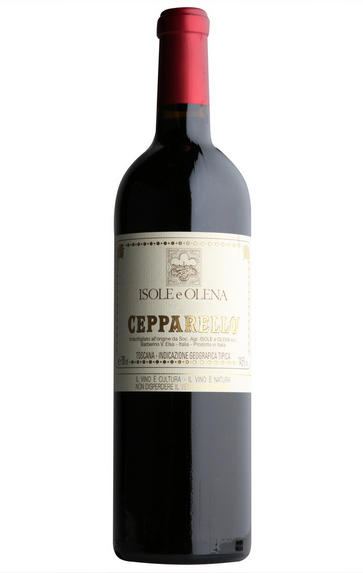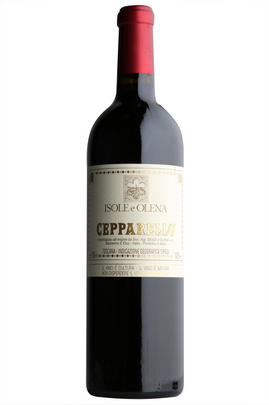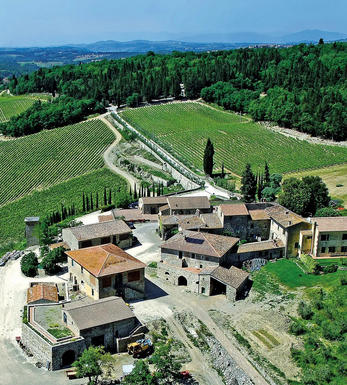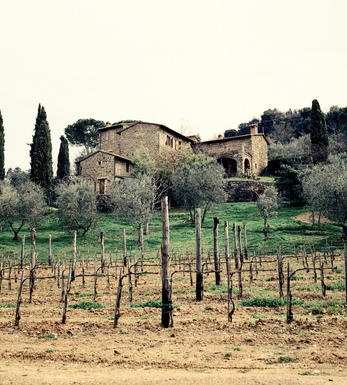
2019 Cepparello, Isole e Olena, Tuscany, Italy

Critics reviews
The 2019 Cepparello has closed down quite a bit since I tasted it last year, as if all of its energy is focused inward. That won't be an issue in another few years' time, but for now readers should resist any temptation to open bottles. Time in the glass brings out gorgeous Sangiovese fruit, along with hints of blood orange, spice, cedar, mint and tobacco, all wrapped together by plush, silky contours. The purity of the fruit is just striking. In 2019, Cepparello is more finesse than power. I expect it will age beautifully over the next several decades.
Drink 2027 - 2044
Antonio Galloni, vinous.com (Jul 2022)
One of the icon wines of Tuscany, the Isole e Olena 2019 Cepparello is all Sangiovese crafted by the loving hands of a winemaking legend, the great Paolo De Marchi (who finalized the sale of his beloved estate when this wine hit the market). Indeed, this wine opens a discussion on the future of this celebrated IGT Toscana, a wine that followed a strict vision and style under De Marchi. It is elegant and rich with fine aromas of black and purple fruit. It ferments in oak and ages in French barrique for 20 months, with one-third new oak. With 58,000 bottles released, this is a sure candidate for long cellar aging.
Drink 2024 - 2048
Monica Larner, Wine Advocate (Febuary 2023)
So much licorice and fennel seed with black cherry and a hint of tomato paste. Medium body, round texture and savory flavors. Pretty and fresh at the end, with subtle flavors. Drink now or hold.
James Suckling, jamessuckling.com (Jul 2022)
About this WINE

Isole e Olena
The Isole et Olena Estate, run by Paolo de Marchi for 45 years, is a Tuscan property that has seen a dramatic rise in quality over the last few decades. Paolo's family, originally from Piedmont, purchased the estate in the 1960s. His attention to detail in both the vineyard and the winery was the driving force that turned quality around. The estate was purchased by the EPI group recently, who have expertise in Tuscany, also owning the famed Montalcino estate Biondi-Santi.
The wines have Cepparello at their head, a barrique-aged Sangiovese classified as an IGT - because at the time of its creation in the 1980s a wine comprising 100% Sangiovese could not legally be labelled as Chianti. There is a Chianti Classico and a Vin Santo, as well as some excellent wines from the Collezione de Marchi label, including a Syrah called Eremo, a Cabernet Sauvignon and a Chardonnay.

IGT Tuscany
IGT (Indicazione Geografica Tipica) Tuscany is a wine classification from Italy's Tuscany region. It is one of the official wine classifications recognized by the Italian government. IGT is a step below the highest classification, DOCG (Denominazione di Origine Controllata e Garantita), and above the DOC (Denominazione di Origine Controllata) level.
The IGT classification was introduced in 1992 to allow winemakers more flexibility in grape varieties and employ winemaking techniques while still ensuring a certain level of quality and geographical indication. This classification gives winemakers more freedom to experiment and innovate, deviating from the strict regulations of the DOC and DOCG classifications.
IGT Tuscany wines can be produced throughout the entire region of Tuscany, encompassing various sub-regions and terroirs within the area. This classification allows winemakers to use traditional Tuscan grape varieties, such as Sangiovese, and non-traditional grape varieties, including international ones like Cabernet Sauvignon, Merlot, Syrah, and others.
The IGT Tuscany classification gives winemakers the flexibility to create wines that showcase the unique characteristics of their specific vineyards and winemaking styles. It allows for experimentation with blending different grape varieties, using innovative winemaking techniques, and exploring new regional vineyard sites.
IGT Tuscany wines can vary greatly, from traditional and terroir-driven expressions to more modern and international styles. This classification has played a significant role in developing Super Tuscan wines, often IGT designated and known for their high quality and international recognition.
Overall, IGT Tuscany provides a platform for winemakers in the region to express their creativity and produce wines that reflect their unique vision while maintaining a connection to the rich heritage and traditions of winemaking in Tuscany.

Sangiovese
A black grape widely grown in Central Italy and the main component of Chianti and Vino Nobile di Montepulciano as well as being the sole permitted grape for the famed Brunello di Montalcino.
It is a high yielding, late ripening grape that performs best on well-drained calcareous soils on south-facing hillsides. For years it was blighted by poor clonal selection and massive overcropping - however since the 1980s the quality of Sangiovese-based wines has rocketed upwards and they are now some of the most sought after in the world.
It produces wines with pronounced tannins and acidity, though not always with great depth of colour, and its character can vary from farmyard/leather nuances through to essence of red cherries and plums. In the 1960s the advent of Super Tuscans saw bottlings of 100% Sangiovese wines, as well as the introduction of Sangiovese/Cabernet Sauvignon blends, the most famous being Tignanello.


Buying options
Add to wishlist
Description
Crunchy red and dark berries give way to sour cherry, menthol and liquorice on the nose. On the palate the berry fruits and menthol notes carry through and mingle with crushed rose petals, wild herbs, and spice that culminate with a smoky finish. Fine grained tannins on the palate provide great structure. The wine has a real elegance to it and I can’t wait to see how it develops. Drink 2024-2040.
Tara Field, Account Manager, Berry Bros. & Rudd (Oct 2022)
wine at a glance
Delivery and quality guarantee